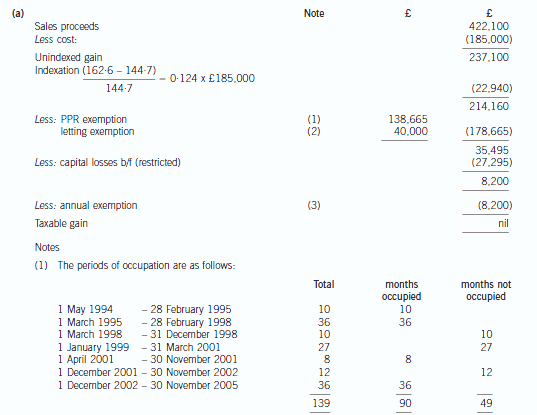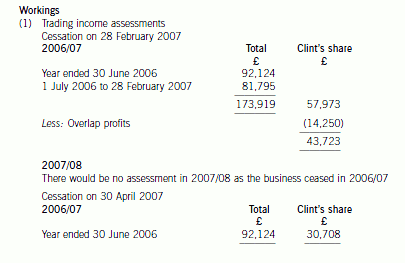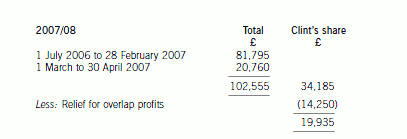ACCA考试报名付款后,有类似准考证什么的吗?
发布时间:2021-05-26
ACCA考试报名付款后,有类似准考证什么的吗?
最佳答案
可以按照以下步骤自行打印。
未收到ACCA官方邮寄准考证的考生可以在MYACCA的账户中下载打印准考证,下载打印的准考证与英国邮寄的准考证作用相同。注:准考证必须有照片,准考证上面没有照片的学员请尽快与ACCA英国方联系。具体打印流程如下:
1、在ACCA官网主页点击MY ACCA,进入登陆页面:
2、进入MY ACCA账
3、进入考试信息页面,在Exam attendance docket中点击Download Docket,确认准考证信息无误后,下载并打印PDF准考证即可:户后点击左侧的EXAM ENTRY:
考生考试时请务必携带好身份证(或护照)和准考证,以便顺利参加考试。
下面小编为大家准备了 ACCA考试 的相关考题,供大家学习参考。
(c) Prepare briefing notes, to be used by an audit partner in your firm, assessing the professional, ethical and
other issues to be considered in deciding whether to proceed with the appointment as auditor of Medix Co.
Note: requirement (c) includes 2 professional marks. (12 marks)
(c) Briefing notes
To: Audit partner
From: Audit manager
Subject: Issues to consider regarding appointment as auditor of Medix Co
Introduction
Medix Co has recently invited our firm to become appointed as auditor. These briefing notes summarise the main issues we
should consider in deciding whether to take the appointment a stage further. My comments are based on a discussion held
with Ricardo Feller, finance director of Medix Co, a discussion with the current audit partner, and information provided in the
local newspaper.
Legal actions and investigations
There are several indications that Medix Co has a history of non compliance with law and regulations. The former finance
director is claiming unfair dismissal, and in the past the local authority has successfully taken legal action against the
company and has a current case pending. In addition, there have been two tax investigations in recent years hinting at noncompliance
with relevant tax regulations.
There are two problems for us in taking on a client with a propensity for legal actions and investigations. Firstly, the reputation
of the company must be considered. If we become associated with the company through being appointed as auditor, we could
be ‘tarred with the same brush’ and our own reputation also tarnished.
Secondly, we could become quickly exposed to an advocacy independence threat, which clearly should be avoided. Our
ethical status should not be compromised for the sake of gaining a new audit client. Mick Evans only ‘believes’ that the tax
matter has been resolved by the directors, and we should avoid taking on a new client which is involved in an on-going
investigation.
Public interest
The problems noted above are compounded by the bad publicity which the company is currently receiving. The local press
contained a recent article discussing Medix Co’s past and current breach of planning regulations. Given the current level of
public interest in environmental issues, and emphasis on corporate responsibility, it would seem that Medix Co has a poor
public perception, which we would not want to be associated with.
Potential liability to lender
The company is currently negotiating a significant bank loan, and the lender will be using the audited financial statements to
make a decision on whether to advance a loan, and the terms of any finance that might be advanced to Medix Co. This means
that our audit opinion for the forthcoming year end will be scrutinised by the lender, and our firm is exposed to a relatively
high risk of liability to a third party. Given that this will be our first audit, and the limited time we have available (discussed
below) our firm may feel that the risk of this audit engagement is too high. Should the appointment be accepted, disclaimers
should be put in place to ensure that we could not be sued in the event of the bank suffering a financial loss as a result of
their lending decision.
Timeframe. and resources
It is currently the last month of the financial year. If we are appointed as auditor we need to work quickly to develop a thorough
understanding of the business, and to begin to plan the assignment. We need to consider whether our firm has sufficient
resources to put together an audit team so quickly without detracting from other client work currently being conducted.
To make this matter worse, Mick Evans states that Medix Co likes ‘a quick audit’, and we need to consider how to manage
this expectation, as first year audit procedures such as systems documentation, and developing business understanding tend
to take a long time. We must be careful that the client does not pressure us into a ‘quick audit’, which could compromise
quality.
Medix Co operates in a reasonably specialist and highly regulated industry, so our firm should take care to ensure we have
expertise in this industry.
Potentially aggressive management style
There are several indicators that the management may take a confrontational approach, such as the unfair dismissal claim
brought against the company by the ex-finance director. In addition, the auditors prior to Mick Evans resigned following a
disagreement with management. This history shows that we may find it difficult to establish a good working relationship with
the management. As the company is owner managed the presence of a dominant managing director exacerbates this problem.
Management bias
There is incentive for the financial statements to be manipulated in order to secure bank finance. There is considerable risk
of material misstatement which our firm may consider to be unacceptably high.
Internal systems and controls
The current auditors have found systems and controls to be poor, and management has not acted upon recommendations
made by the auditors. Of course this does not mean that we should not take on the assignment – many companies have
weak controls. However, if we did take on the appointment, we would not be able to rely on controls or use a controls based
approach for the audit. We would need to take a substantive approach to the audit. One practical issue here is availability of
staff to conduct the audit testing, as substantive procedures tend to be more time consuming than if we could have taken a
systems based approach.
Opening balances
In all new audit assignments, work must be conducted to verify the opening balances. Given the possible fraud and poor
controls described above, we would need to perform. detailed testing on the opening balances as there is a high risk of fraud
and/or error in previous accounting periods. We may also wish to consider the competence of the previous auditors, who
appeared to disregard potential fraud indicator (two cash books) and had only one audit client.
Fees
Mick Evans has made it clear that Medix Co’s management likes to keep a tight control on costs, and it may put pressure on
us to charge a low audit fee. We need to bear in mind the risks associated with this engagement, as discussed above, and
only take on this high risk audit if the audit fee is high enough to compensate.
We should also consider the cash flow problems being experienced by the company. As a business we need to ensure that
we only take on clients with a good credit rating, and it seems that Medix Co, operating with an overdraft, may not be able
to pay our invoices.
Indication of fraud or money laundering
Surely the most serious issue to consider is that Jon Tate, the managing director, has kept two cash books. We need further
detail on this, but it clearly could indicate a fraud being perpetrated at the highest level of management. The fact that he has
maintained two cash books could indicate money laundering activites taking place, especially when considered in the context
of an owner-managed business with overseas operations. If this were the ONLY problem discovered it could be deemed
serious enough to bring to an end our appointment process. It would be reckless for our firm to take on a client where the
managing director is a fraudster.
Conclusion
Further information is needed in many areas before a final decision is made. However, from the information we have gathered
so far, it appears that Medix Co would represent a high risk client, and our firm must therefore be very careful to assess each
problem noted above before deciding whether to proceed with the appointment.
1 Stuart is a self-employed business consultant aged 58. He is married to Rebecca, aged 55. They have one child,
Sam, who is aged 24 and single.
In November 2005 Stuart sold a house in Plymouth for £422,100. Stuart had inherited the house on the death of
his mother on 1 May 1994 when it had a probate value of £185,000. The subsequent pattern of occupation was as
follows:
1 May 1994 to 28 February 1995 occupied by Stuart and Rebecca as main residence
1 March 1995 to 31 December 1998 unoccupied
1 January 1999 to 31 March 2001 let out (unfurnished)
1 April 2001 to 30 November 2001 occupied by Stuart and Rebecca
1 December 2001 to 30 November 2005 used occasionally as second home
Both Stuart and Rebecca had lived in London from March 1995 onwards. On 1 March 2001 Stuart and Rebecca
bought a house in London in their joint names. On 1 January 2002 they elected for their London house to be their
principal private residence with effect from that date, up until that point the Plymouth property had been their principal
private residence.
No other capital disposals were made by Stuart in the tax year 2005/06. He has £29,500 of capital losses brought
forward from previous years.
Stuart intends to invest the gross sale proceeds from the sale of the Plymouth house, and is considering two
investment options, both of which he believes will provide equal risk and returns. These are as follows:
(1) acquiring shares in Omikron plc; or
(2) acquiring further shares in Omega plc.
Notes:
1. Omikron plc is a listed UK trading company, with 50,250,000 shares in issue. Its shares currently trade at 42p
per share.
2. Stuart and Rebecca helped start up the company, which was then Omega Ltd. The company was formed on
1 June 1990, when they each bought 24,000 shares for £1 per share. The company became listed on 1 May
1997. On this date their holding was subdivided, with each of them receiving 100 shares in Omega plc for each
share held in Omega Ltd. The issued share capital of Omega plc is currently 10,000,000 shares. The share price
is quoted at 208p – 216p with marked bargains at 207p, 211p, and 215p.
Stuart and Rebecca’s assets (following the sale of the Plymouth house but before any investment of the proceeds) are
as follows:
Assets Stuart Rebecca
£ £
Family house in London 450,000 450,000
Cash from property sale 422,100 –
Cash deposits 165,000 165,000
Portfolio of quoted investments – 250,000
Shares in Omega plc see above see above
Life insurance policy note 1 note 1
Note:
1. The life insurance policy will pay out a sum of £200,000 on the death of the first spouse to die.
Stuart has recently been diagnosed with a serious illness. He is expected to live for another two or three years only.
He is concerned about the possible inheritance tax that will arise on his death. Both he and Rebecca have wills whose
terms transfer all assets to the surviving spouse. Rebecca is in good health.
Neither Stuart nor Rebecca has made any previous chargeable lifetime transfers for the purposes of inheritance tax.
Required:
(a) Calculate the taxable capital gain on the sale of the Plymouth house in November 2005 (9 marks)

Note that the last 36 months count as deemed occupation, as the house was Stuart’s principal private residence (PPR)
at some point during his period of ownership.
The first 36 months of the period from 1 March 1995 to 31 March 2001 qualifies as a deemed occupation period as
Stuart and Rebecca returned to occupy the property on 1 April 2001. The remainder of the period will be treated as a
period of absence, although letting relief is available for part of the period (see below).
The exempt element of the gain is the proportion during which the property was occupied, real or deemed. This is
£138,665 (90/139 x £214,160).
(2) The chargeable gain is restricted for the period that the property was let out. This is restricted to the lowest of the
following:
(i) the gain attributable to the letting period (27/139 x 214,160) = £41,599
(ii) £40,000
(iii) the total exempt PPR gain = £138,665
i.e. £40,000.
(3) The taper relief is effectively wasted, having restricted losses b/f to preserve the annual exemption.
(c) Explain the term ‘target costing’ and how it may be applied by GWCC. Briefly discuss any potential
limitations in its application. (8 marks)
(c) Target costing should be viewed as an integral part of a strategic profit management system. The initial consideration in target
costing is the determination of an estimate of the selling price for a new product which will enable a firm to capture its required
share of the market. In this particular example, Superstores plc, which on the face of it looks a powerful commercial
organisation, wishes to apply a 35% mark-up on the purchase price of each cake from GWCC. Since Superstores plc has
already decided on a launch price of £20·25 then it follows that the maximum selling price that can be charged by GWCC
is (100/135) x £20·25 which is £15·00.
This is clearly a situation which lends itself to the application of target costing/pricing techniques as in essence GWCC can
see the extent to which they fall short of the required level of return with regard to a contract with Superstores plc which ends
after twelve months. Thus it is necessary to reduce the total costs by £556,029 to this figure in order to achieve the desired
level of profit, having regard to the rate of return required on new capital investment. The deduction of required profit from
the proposed selling price will produce a target price that must be met in order to ensure that the desired rate of return is
obtained. Thus the main theme that underpins target costing can be seen to be ‘what should a product cost in order to achieve
the desired level of return’.
Target costing will necessitate comparison of current estimated cost levels against the target level which must be achieved if
the desired levels of profitability, and hence return on investment, are to be achieved. Thus where a gap exists between the
current estimated cost levels and the target cost, it is essential that this gap be closed.
The Directors of GWCC plc should be aware of the fact that it is far easier to ‘design out’ cost during the pre-production phase
than to ‘control out’ cost during the production phase. Thus cost reduction at this stage of a product’s life cycle is of critical
significance to business success.
A number of techniques may be employed in order to help in the achievement and maintenance of the desired level of target
cost. Attention should be focussed upon the identification of value added and non-value added activities with the aim of the
elimination of the latter. The product should be developed in an atmosphere of ‘continuous improvement’. In this regard, total
quality techniques such as the use of Quality circles may be used in attempting to find ways of achieving reductions in product
cost.
Value engineering techniques can be used to evaluate necessary product features such as the quality of materials used. It is
essential that a collaborative approach is taken by the management of GWCC and that all interested parties such as suppliers
and customers are closely involved in order to engineer product enhancements at reduced cost.
The degree of success that will be achieved by GWCC via the application of target costing principles will be very much
dependent on the extent of ‘flexibility’ in variable costs. Also the accuracy of information gathered by GWCC will assume
critical importance because the use of inaccurate information will produce calculated ‘cost gaps’ which are meaningless and
render the application of target costing principles of little value.
(ii) Analyse the effect of delaying the sale of the business of the Stiletto Partnership to Razor Ltd until
30 April 2007 on Clint’s income tax and national insurance position.
You are not required to prepare detailed calculations of his income tax or national insurance liabilities.
(4 marks)
(ii) The implications of delaying the sale of the business
The implications of delaying the sale of the business until 30 April would have been as follows:
– Clint would have received an additional two months of profits amounting to £6,920 (£20,760 x 1/3).
– Clint’s trading income in 2006/07 would have been reduced by £13,015 (£43,723 – £30,708), much of which
would have been subject to income tax at 40%. His additional trading income in 2007/08 of £19,935 would all
have been taxed at 10% and 22%.
– Clint is entitled to the personal age allowance of £7,280 in both years. However, it is abated by £1 for every £2
by which his total income exceeds £20,100. Once Clint’s total income exceeds £24,590 (£20,100 + ((£7,280
– £5,035) x 2)), his personal allowance will be reduced to the standard amount of £5,035. Accordingly, the
increased personal allowance would not be available in 2006/07 regardless of the year in which the business was
sold. It is available in 2007/08 (although part of it is wasted) but would not have been if the sale of the business
had been delayed.
– Clint’s class 4 national insurance contributions in 2006/07 would have been reduced due to the fall in the level
of his trading income. However, much of the saving would be at 1% only. Clint is not liable to class 4 national
insurance contributions in 2007/08 as he is 65 at the start of the year.
– Changing the date on which the business was sold would have had no effect on Clint’s class 2 liability as he is
not required to make class 2 contributions once he is 65 years old.


声明:本文内容由互联网用户自发贡献自行上传,本网站不拥有所有权,未作人工编辑处理,也不承担相关法律责任。如果您发现有涉嫌版权的内容,欢迎发送邮件至:contact@51tk.com 进行举报,并提供相关证据,工作人员会在5个工作日内联系你,一经查实,本站将立刻删除涉嫌侵权内容。
- 2021-04-16
- 2021-11-17
- 2021-05-20
- 2021-02-11
- 2021-03-11
- 2021-07-27
- 2021-05-06
- 2021-01-01
- 2021-03-10
- 2021-04-22
- 2021-03-11
- 2021-05-06
- 2021-04-22
- 2021-03-10
- 2021-03-11
- 2021-04-24
- 2021-03-12
- 2021-06-08
- 2021-05-19
- 2021-04-16
- 2021-05-07
- 2021-03-11
- 2021-03-11
- 2021-06-12
- 2021-04-25
- 2021-03-12
- 2021-03-12
- 2021-03-12
- 2021-01-01
- 2021-04-22